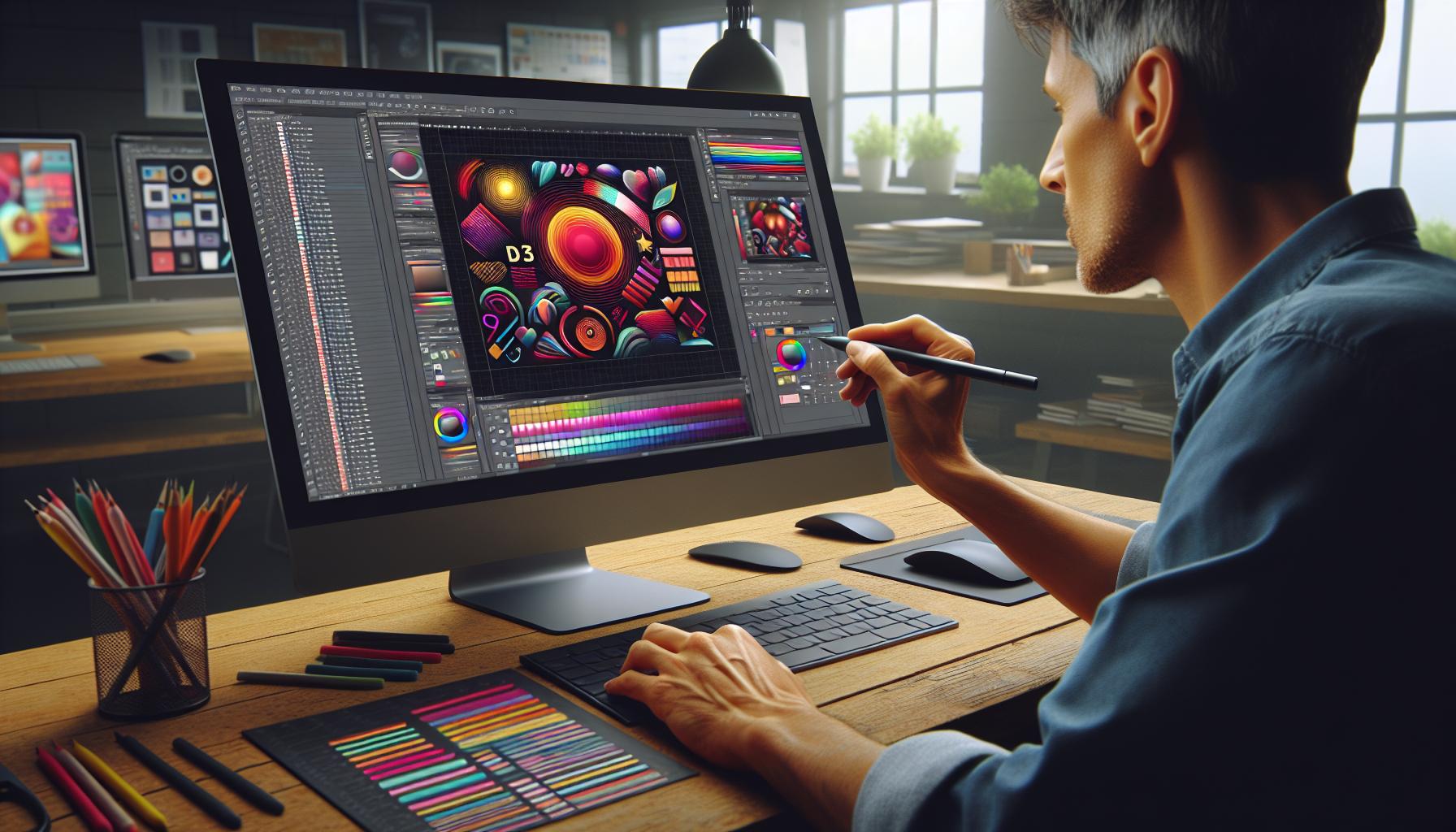In the fast-paced world of web design, staying ahead of the curve is crucial. Enter Sketch, the superhero of design tools that transforms ideas into stunning visuals faster than you can say “pixel-perfect.” With its intuitive interface and powerful features, Sketch empowers designers to create websites that not only look great but also function seamlessly.
Sketch Web Design
Sketch has emerged as a go-to tool for web designers seeking efficiency and creativity. This design platform focuses on vector graphics, making it suitable for creating scalable designs that maintain quality across devices. Designers appreciate its lightweight nature, allowing for swift operation without overwhelming system resources.
User-friendly features contribute to its popularity. An intuitive interface simplifies navigation, making it accessible for beginners and efficient for seasoned professionals. Collaborative aspects in Sketch enable teams to share projects and gather feedback in real-time, streamlining the design process.
The ability to create reusable components enhances workflow efficiency. Designers leverage symbols to maintain consistency across multiple artboards, reducing redundancy. Styles applied to components ensure uniformity, which is crucial in brand identity.
Plugins extend Sketch’s functionality, providing additional tools tailored to specific needs. Numerous third-party options exist, enhancing productivity and allowing integration with other platforms such as Slack and Airbnb. Designers can customize their experience based on project requirements.
Prototype capabilities in Sketch allow designers to showcase interactions and transitions effectively. This feature provides clients with a clearer understanding of the end product. By presenting realistic mockups, designers can gather insightful feedback early on, mitigating later revisions.
Responsive design features facilitate adaptation across different screen sizes. With the increasing prevalence of mobile devices, designing for various resolutions is essential. Sketch accommodates this need, ensuring designs work seamlessly across platforms.
Overall, Sketch provides a comprehensive environment for web design, combining ease of use with advanced functionalities suited for diverse design projects.
Key Features Of Sketch

Sketch stands out due to its array of robust features that cater to web design needs. Its intuitive tools and flexible environment empower designers to create with efficiency and ease.
User Interface
The user interface of Sketch presents a clean and straightforward layout, designed to enhance usability. Toolbars and panels are easy to navigate, allowing quick access to essential functions. Designers can focus on their work without unnecessary distractions. Customizable workspaces enable personalized setups that enhance productivity. Moreover, the grid and alignment tools streamline the positioning of elements, ensuring precision in designs.
Vector Editing
Vector editing capabilities are a highlight of Sketch, facilitating scalable graphics that maintain quality across devices. Designers manipulate shapes effortlessly using points and paths. The Boolean operations allow for complex shapes to be created quickly, regardless of the design complexity. Additionally, the ability to convert raster images into vector formats provides flexibility in design choices. Each edit remains non-destructive, enabling designers to experiment without risking original artwork.
Benefits Of Using Sketch For Web Design

Sketch streamlines the web design process through its innovative features. Its collaborative tools enhance teamwork and communication.
Collaboration Tools
Collaboration tools built into Sketch allow designers to work together seamlessly. Real-time feedback enables faster decision-making while maintaining a steady workflow. Shared projects ensure all team members stay on the same page, significantly reducing miscommunication. Commenting features facilitate discussions directly on designs, making it easier to address issues. Version control maintains project integrity by tracking changes, enabling designers to revert to previous iterations if necessary. Overall, these collaborative elements make Sketch particularly effective for teams of all sizes.
Prototyping Capabilities
Prototyping capabilities in Sketch enhance the design validation process significantly. Interactive prototypes allow designers to showcase user flows and interactions clearly. Clients benefit from seeing how designs function before development, resulting in better alignment with expectations. Transitions and animations add depth to prototypes, providing a realistic experience of the final product. Furthermore, exporting prototypes for user testing becomes easier, yielding valuable insights into usability. These capabilities position Sketch as a crucial tool for delivering effective web designs that resonate with users.
Comparison With Other Design Tools

Sketch competes with several prominent design tools, each offering unique functionalities tailored to different user needs.
Adobe XD
Adobe XD provides a comprehensive toolkit that excels in prototyping and collaboration. It features vector design tools suitable for creating responsive layouts. Designers appreciate the seamless integration within the Adobe Creative Cloud, enhancing workflow efficiency. Real-time collaboration enables teams to work simultaneously and share insights instantly. The auto-animation capability simplifies transitions between artboards, adding dynamism to presentations. While powerful, Adobe XD’s complex features might require a steeper learning curve for newcomers compared to Sketch. Designers often choose Adobe XD for projects requiring robust design handoff features and extensive plugin support.
Figma
Figma stands out for its browser-based platform, enabling instant collaboration without downloads. Designers can access their projects from any device, streamlining the workflow in remote teams. The real-time editing feature fosters creativity as multiple users interact simultaneously. Figma’s design systems help maintain consistency across projects with reusable components and styles. Unlike Sketch, Figma requires an internet connection, which can limit its use in specific situations. Its vector editing capabilities are comparable to those in Sketch, making it a strong alternative. Overall, Figma attracts teams prioritizing collaborative design environments and accessibility across devices.
Best Practices For Sketch Web Design
Effective web design in Sketch requires strategic organization and thoughtful use of features. Following best practices enhances efficiency and produces high-quality outcomes.
Organizing Artboards
Organizing artboards plays a crucial role in project management. Designers should group related artboards together to facilitate navigation. Each artboard must align with specific design screens, maintaining a clear structure. Utilizing naming conventions helps identify artboards quickly, reducing confusion. For large projects, a well-structured hierarchy aids in locating components faster. Keeping artboards in a logical sequence promotes a smooth workflow, allowing for quick updates and modifications. Regularly reviewing the organization of artboards ensures alignment with project goals. Saving time and effort reflects the importance of maintaining a tidy workspace.
Utilizing Symbols
Utilizing symbols effectively simplifies design consistency. Designers can create reusable components, ensuring identical styles across the project. When changes occur to a master symbol, all instances automatically update, allowing for efficient modifications. Integrating symbols enhances collaborative efforts, as team members retain visual coherence. Moreover, using symbols streamlines the creation of design variations. Applying consistent icons, buttons, and other elements improves user experience and brand identity. Regularly reviewing and updating symbol libraries keeps designs fresh and functional. Ultimately, effective use of symbols boosts productivity while maintaining high-quality designs.
Engaging Digital Experiences
Sketch stands out as an essential tool for modern web design. Its intuitive interface and powerful features enable designers to create stunning websites efficiently. By focusing on vector graphics and scalable designs, Sketch ensures quality across various devices.
The collaborative tools enhance teamwork and streamline feedback, making it easier to align with client expectations. With robust prototyping capabilities and a flexible environment, designers can showcase their ideas effectively.
Ultimately, adopting Sketch can significantly elevate the web design process, allowing for creativity and efficiency while maintaining a strong brand identity. Embracing this tool can lead to more successful and engaging digital experiences.



